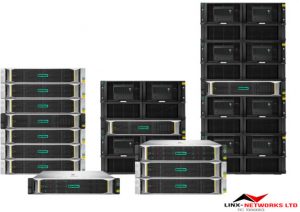 Do not underestimate the lingering reality that all hardware manufacturers are motivated to sell as much new equipment as possible to as many customers as possible. So, as the warranty period for your storage nears, expect the push for new equipment to feel more like a shove.
Do not underestimate the lingering reality that all hardware manufacturers are motivated to sell as much new equipment as possible to as many customers as possible. So, as the warranty period for your storage nears, expect the push for new equipment to feel more like a shove.
One not-so-subtle factor used to motivate premature upgrades is a drastic jump in price for manufacturer-supplied maintenance in the fourth and subsequent years of a product’s lifecycle. While this may create the perception that switching out equipment makes more sense than extending its useful life, don’t fall for it! .Options exist, you just need to know where to look.
Independent service providers offer substantial savings on Third Party Maintenance (TPM) for all types of hardware, including storage, once past its prime yet still in excellent working condition. According to Gartner, “A core value proposition of TPM providers is lowering the maintenance costs of older storage arrays.
Bring Storage Strategies into Focus
Most of the leading providers of TPM offer internal audits of your environment, providing an excellent opportunity for a fresh view of multi-vendor IT environments. In many cases, specialized tools are used to evaluate the reliability, performance, cost and operational risks of hanging on longer to current- and previous-generation gear.
Typically, these audits include an up-to-date inventory of all assets in your data center along with suggestions and next steps. Noteworthy in any audit are recommendations for storage and other IT assets nearing the end of their original warranty. As this is never a one-size-fits-all situation, auditors can help organizations evaluate and determine specific and individualized future paths for each asset.
Storage Audits
While microcode updates drop quickly by an array’s third or fourth year of use, many IT leaders don’t realize that each array’s useful service life is much longer than the manufacturer’s active marketing life. Consulting with a third-party through the audit process will help bring clear light to whether upgrading is warranted based on new and enhanced functionality or if hanging onto equipment longer frees up much-needed budget for other strategic business or IT initiatives.
When the audit is completed, a detailed picture of current operations—as well as valuable insight into the future—come into sharper focus. The bottom line: It’s almost always judicious to put off storage upgrades unless dictated by business priorities.
